|
Books Should Be Free Loyal Books Free Public Domain Audiobooks & eBook Downloads |
|
|
Books Should Be Free Loyal Books Free Public Domain Audiobooks & eBook Downloads |
|
Dramatic Works |
|---|
|
Book type:
Sort by:
View by:
|
By: James Elroy Flecker (1884-1915) | |
|---|---|
 King of Alsander (Dramatic Reading)
King of Alsander (Dramatic Reading)
First published in 1914, the King of Alsander is the only novel by James Elroy Flecker, best known as a poet, but also a noted scholar, linguist and diplomat. Flecker's love of learning, language and travel, and his keen satirical insight into politics are all in evidence in this phantasmagoric tale. As the author himself describes it: Here is a tale all romance - a tale such as only a Poet can write for you, O appreciative and generous Public - a tale of madmen, kings, scholars, grocers, consuls,... | |
By: James Joyce (1882-1941) | |
|---|---|
 Exiles
Exiles
Exiles is a play by James Joyce, who is principally remembered for his novels. It was rejected by W. B. Yeats for production by the Abbey Theatre. Its first major London performance was in 1970, when Harold Pinter directed it at the Mermaid Theatre. The basic premise of Exiles involves a love triangle between Richard Rowan (a Dublin writer recently returned from exile in Rome), Bertha (his common law wife) and his old friend Robert Hand (a journalist). (There are obvious parallels to be drawn with... | |
By: James Planché (1796-1880) | |
|---|---|
 Vampire; or, The Bride of the Isles
Vampire; or, The Bride of the Isles
Freely adapted from Lord Byron’s Fragment of a Novel, J.R. Planché’s The Vampire; or, the Bride of the Isles predates Dracula in its depiction of the vampire as a seductive, sophisticated, and noble figure. It also helped popularize the character of Lord Ruthven, a nefarious “creature of the night” who would later be immortalized in numerous films, operas, roleplaying games, novels and comic books. Set in the Scottish Isles, Planché’s play begins with our heroine having a prophetic vision of her own demise... | |
By: Jane Austen (1775-1817) | |
|---|---|
 Northanger Abbey
Northanger Abbey
Jane Austen’s Northanger Abbey is a book about the life of Catherine Morland and her romantic relationships. The novel is divided into two parts; the first part begins with Catherine’s visit to Bath and her relationship with Henry Tilney and the other people she met there, and the second part starts with the arrival of Frederick Tilney and her visit to Northanger Abbey. This book alongside Pride and Prejudice and Sense and Sensibility is considered one of the major works of Jane Austen. The novel had undergone many revisions before its publication and it was even originally titled “Catherine... | |
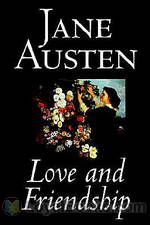 Love and Friendship
Love and Friendship
Begun when she was just eleven years old, Love and Friendship is one of Jane Austen's stories that very few readers may have encountered before. Austen experts feel that this story was written, like many others, only for the pleasure of her family and friends. It is scribbled across three notebooks, in childish handwriting, and the complete work is thought to have been written over a period of six or seven years. It is dedicated to one of her cousins, whom she was very close to, Eliza de Feuillide... | |
By: Jane D. Abbott (1881-1968) | |
|---|---|
 Highacres (Dramatic Reading)
Highacres (Dramatic Reading)
The story of a young mountain girl and her first year of city living and going to a high school. She knows nothing of town life, but she had dreams and longs to learn more and discover what the world is like outside of her mountain home. Go with her to the Westley's home, where she finds everyone kind, except the Wesley's oldest daughter, Isobel, who is proud and snubs her. With determination, and courage she enjoys her first year, and longs to continue at Highacres. | |
By: Jean Racine (1639-1699) | |
|---|---|
 Alexander the Great
Alexander the Great
Racine caused furour in the French theater community with his second play, Alexander the Great, when "The sensitive poet seems to have been disgusted by the manner in which it was being acted; for, a fortnight after it had been put on the boards at the Palais Royal [by Moliere], Moliere's company learned with astonishment and indignation that it was being simultaneously performed at a rival theatre." "The story of this drama is derived from Quintus Curtius, Plutarch, and Justin." Racine followed the rules of classical French dramatists: one main plot, action takes place in one day and at one location... | |
By: Jesse Lynch Williams (1871-1929) | |
|---|---|
 Why Marry?
Why Marry?
Why Marry? is a comedy, which "tells the truth about marriage". We find a family in the throes of proving the morality of marriage to a New Age Woman. Can the family defend marriage to this self-supporting girl? Will she be convinced that marriage is the ultimate sacredness of a relationship or will she hold to her perception that marriage is the basis of separating two lovers."Why Marry?" won the first Pulitzer Prize for Drama. | |
By: Johann Wolfgang von Goethe (1749-1832) | |
|---|---|
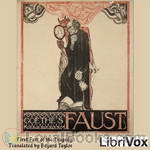 Faust, Part 1
Faust, Part 1
Faust is the protagonist of a classic German legend; a highly successful scholar, but also dissatisfied with his life, and so makes a deal with the devil, exchanging his soul for unlimited knowledge and worldly pleasures.Johann Wolfgang von Goethe's Faust is a tragic play in two parts. It is Goethe's most famous work and considered by many to be one of the greatest works of German literature.This first part of Faust is not divided into acts, but is structured as a sequence of scenes in a variety of settings. After a dedicatory poem and a prelude in the theatre, the actual plot begins with a prologue in Heaven and Scene 1 in Faust's study. | |
By: Johanna Spyri (1827-1901) | |
|---|---|
 Heidi (version 2 dramatic reading)
Heidi (version 2 dramatic reading)
"Heidi" takes us on a journey to the eventful childhood of a good-hearted girl from the Swiss Alps. A warm and loving story, full of touching moments, it reaches children and adults alike. It was written in 1880 and published in two parts: 1. Heidi's years of learning and travel. 2. Heidi makes use of what she has learned. This English translation from 1915 has "an especial flavor, that very quality of delight in mountain scenes, in mountain people and in child life generally, which is one of the chief merits of the German original... | |
By: John Fletcher (1579-1625) | |
|---|---|
 The Woman's Prize, or The Tamer Tamed
The Woman's Prize, or The Tamer Tamed
John Fletcher's comedy (probably written and performed around 1611) is a sequel to Shakespeare's The Taming of the Shrew, in which, as the title suggests, the tamer will be tamed. Petruchio, the shrew-tamer, has been widowed, and marries a second wife, Maria, a "chaste witty lady." At the instigation of her cousin Bianca, and with the fellowship of her sister Livia, Maria decides to go on strike for equal rights, refusing to behave as a proper 17th century wife. Fletcher's play addresses the issue of men and women's roles within marriage, a controversial issue for his day. | |
By: John Galsworthy (1867-1933) | |
|---|---|
 Skin Game
Skin Game
A small play in three acts. A kind of comic tragedy. The plot tells the story of the interaction between two very different families in rural England just after the end of the First World War. Squire Hillcrist lives in the manor house where his family has lived for generations. He has a daughter, Jill, who is in her late teens; and a wife, Amy, as well as servants and retainers. He is "old money", although his finances are at a bit of low ebb. The other family is the "nouveau riche" Hornblowers,... | |
By: John Kendrick Bangs (1862-1922) | |
|---|---|
 Peeps at People - Being Certain Papers from the Writings of Anne Warrington Witherup
Peeps at People - Being Certain Papers from the Writings of Anne Warrington Witherup
Written by a fictitious first-person narrator, this book puts a humorous spin on encounters with several famous people of the time. "I set forth from my office in London upon my pilgrimage to the shrines of the world's illustrious. Readers everywhere are interested in the home life of men who have made themselves factors in art, science, letters, and history, and to these people I was commissioned to go." -- Summary by TriciaG and from the book. | |
By: John Milton (1608-1674) | |
|---|---|
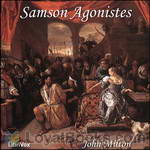 Samson Agonistes
Samson Agonistes
“The Sun to me is darkAnd silent as the Moon,When she deserts the nightHid in her vacant interlunar cave.”Milton composes his last extended work as a tragedy according to the classical Unities of Time, Place and Action. Nevertheless it “never was intended for the stage” and is here declaimed by a single reader.Samson the blinded captive, in company with the Chorus of friends and countrymen, receives his visitors on their varying missions and through them his violent story is vividly recalled... | |
By: John Rae (1882-1963) | |
|---|---|
 New Adventures of Alice (version 2 Dramatic Reading)
New Adventures of Alice (version 2 Dramatic Reading)
After reading and re-reading the book many time as a boy and wishing that Lewis Carroll would have written another Alice In Wonderland Book, John Rae began imagining what that girl would have gotten up to if he had done so. Telling these stories to his children over the years, where they were enthusiastically received, he finally decided to share them with the world. And here they are! The New Adventures of Alice | |
By: John Webster (c.1580 - c.1634) | |
|---|---|
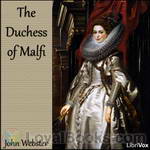 The Duchess of Malfi
The Duchess of Malfi
John Webster's bloody Jacobean tragedy exposes the decadence of the Italian court. The virtuous Duchess of Malfi, a young widow, secretly marries her steward Antonio, and is subsequently persecuted by her brothers: the sexually obsessed and eventually mad Ferdinand, and the corrupt Cardinal. | |
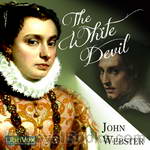 The White Devil
The White Devil
John Webster's The White Devil (1612) is a Jacobean revenge tragedy, replete with adultery, murder, ghosts, and violence. The Duke of Brachiano and Vittoria Corombona decide to kill their spouses, Isabella and Camillo, in order to be together, aided by the crafty and ambitious Flamineo, Vittoria's brother. Their actions prompt vows of revenge from Isabella's brother Francisco, the Duke of Florence, and Count Lodovico, who was secretly in love with her. The title refers to the early modern proverb that "the white devil is worse than the black," indicating the hypocrisy practiced by many of the characters in the play. | |
By: Johnston McCulley (1883-1958) | |
|---|---|
 Curse of Capistrano (Dramatic Reading)
Curse of Capistrano (Dramatic Reading)
The Curse of Capistrano is the first work to feature the fictional character Zorro . The story was later republished under the name The Mark of Zorro. The outlaw Zorro is Public Enemy #1 in southern California during the period of Mexican rule. But he's not a bad guy, really - he fights for justice for the oppressed. And when he meets the lovely Lolita, daughter of Don Pedro, who is on the governor's bad side, he has even more reason to fight. But she's being wooed by the rich and influential but wimpy Don Diego... | |
By: José Echegaray y Eizaguirre (1832-1916) | |
|---|---|
 Great Galeoto
Great Galeoto
"What touches us more closely is Echegaray's manipulation of the modern conscience, and its illimitable scope for reflection, for conflict, and the many-sided drama of temptation.... Not even Tolstoi, with all that delicacy and keenness of the Russian conscience, that profound seriousness, which moves us so variously in his great books, has a nobler consciousness of the dignity of suffering and virtue than this Spanish dramatist. And not less capable is he of a jesting survey of life." Echegaray won the Nobel Prize for literature in 1904... | |
By: Joseph Conrad (1857-1924) | |
|---|---|
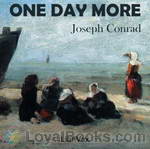 One Day More
One Day More
A one-act play. Eccentric Captain Hagberd has been waiting for years for his son to come home from the sea. He has scrimped and saved, outfitting a house for Harry to inherit upon his return, which will be in only "one day more." He has also planned that Harry will marry Bessie, the repressed maiden next door. Note: The recording was done outside, so there will be some ambient noise (airplanes, lawn mowers, birds, children... etc). | |
By: Joseph Smith Fletcher (1863-1935) | |
|---|---|
 Orange-Yellow Diamond
Orange-Yellow Diamond
| |
By: Josephine Turck Baker (1864-1942) | |
|---|---|
 Art of Conversation: Twelve Golden Rules
Art of Conversation: Twelve Golden Rules
Many of us find it challenging to speak to other people, for various reasons. Some of us are afraid of being called a bore. Others are worried that we will be accused of hogging attention. Many of us simply don't know what to talk about. This book is an entertaining and enlightening manual that may be able to help. Through a series of twelve dialogues between a man and a woman, we are introduced to twelve "golden rules" that will help us navigate the waters of interpersonal communication. He: Read by KevinS She: Read by Devorah Allen | |
By: Jules Verne (1828-1905) | |
|---|---|
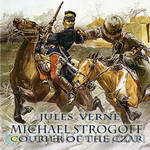 Michael Strogoff
Michael Strogoff
This is the account of the perilous mission of Michael Strogoff, courier for Czar Alexander II, who is sent from Moscow to the besieged city of Irkutsk, where the governor, brother of the Czar, has taken his last stand against a Tartar rebellion led by the fearsome Feofar-Khan. When telegraph lines are cut between the Russian Far East and the mainland, Strogoff must make his way through hostile territory to warn the governor of the return of the traitor Ivan Ogareff, a disgraced former officer who seeks vengeance against the Tsar’s family by the destruction of Irkutsk. | |
By: Karel Čapek (1890-1938) | |
|---|---|
 R.U.R. (Rossum’s Universal Robots)
R.U.R. (Rossum’s Universal Robots)
Helena Glory, as the daughter of a major industrial power's president, is a woman on a mission. She faces the island factory of Rossum's Universal Robots, the world's leading company in robotic engineering. She is convinced that these new creations called robots they make are deserving of rights like humans do. Everyone else is convinced robots are nothing more than tools for human use. Is it so, or is a robot rebellion becoming a more likely prospect as the robots start to seem more intelligent than first thought? First performed in English in 1922, R... | |
By: Kate Douglas Wiggin (1856-1923) | |
|---|---|
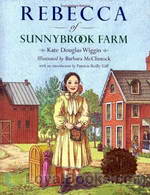 Rebecca of Sunnybrook Farm
Rebecca of Sunnybrook Farm
Eleven year old Rebecca Rowena Randall travels to Riverboro, Maine, to live with her spinster aunts, Jane and Miranda Sawyer. Her father has been dead for three years and her mother is unable to cope with her brood of seven growing children. Rebecca is being sent to her aunts' farm to try to improve her prospects in life and also ease the family's burden. The aunts had actually wanted her older and more placid sister, Hannah, who is more handy round the house to be sent, but Rebecca's mother sends the dreamy, more imaginative Rebecca instead... | |
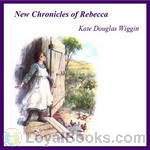 New Chronicles of Rebecca
New Chronicles of Rebecca
This book tells further stories from the period of Rebecca’s sojourn in Riverboro. | |
By: Kenneth McGaffrey (??-1938) | |
|---|---|
 The Sorrows of a Show Girl
The Sorrows of a Show Girl
Originally printed in The Morning Telegraph in New York, this is the story of Miss Sabrina, the show girl, and her ups and downs with the unpredictable theatrical industry and the Great White Way, the lights and glamour of Broadway. "In order to set myself right with both the public and the vast army of Sabrinas that add youth and beauty to our stage, and brilliancy and gaiety to our well known cafes, I wish to say that she is all that she should be...”- Kenneth McGaffrey | |
By: L. Frank Baum (1856-1919) | |
|---|---|
 Marvelous Land of Oz (version 2) (Dramatic Reading)
Marvelous Land of Oz (version 2) (Dramatic Reading)
The Marvelous Land of Oz Being an account of the further adventures of the Scarecrow and Tin Woodman and also the strange experiences of the highly magnified Woggle-Bug, Jack Pumpkin-head, the Animated Saw-Horse and the Gump; the story being A Sequel to The Wizard of Oz. | |
By: Langdon Mitchell (1862-1935) | |
|---|---|
 The New York Idea
The New York Idea
I find it very hard to classify "The New York Idea" under any of the established rubrics. It is rather too extravagant to rank as a comedy; it is much too serious in its purport, too searching in its character-delineation and too thoughtful in its wit, to be treated as a mere farce. Its title—not, perhaps, a very happy one—is explained in this saying of one of the characters: "Marry for whim and leave the rest to the divorce court—that's the New York idea of marriage." Like all the plays,... | |
By: Lewis Carroll | |
|---|---|
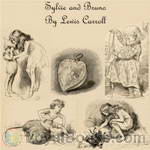 Sylvie and Bruno
Sylvie and Bruno
The novel has two main plots; one set in the real world at the time the book was published (the Victorian era), the other in the fantasy world of Fairyland. While the latter plot is a fairytale with many nonsense elements and poems, similar to Carroll’s Alice books, the story set in Victorian Britain is a social novel, with its characters discussing various concepts and aspects of religion, society, philosophy and morality. This book is the first of two volumes and the two intertwining stories are brought to a close in the second volume, Sylvie and Bruno Concluded. | |
By: Lillian Nixon Lawrence | |
|---|---|
 Little Dramas for Primary Grades
Little Dramas for Primary Grades
37 short and very short plays for young children - David O Readers: Linette Geisel: Camel, Big Black Dog, First Child, Camel, Grandma, Red Fox, Child, First Pig, Mrs. Dove, Third Chick, Littlest Fir Tree, French Doll, Mary, Camel, Sparrow, Mrs. Sparrow, Sheep, Little Tree, Columbine, Rose, Lobster, Jellyfish, Flowers, Sanja, Tree, Camel Tomas Peter: Lion, Odd Man, Lion, Fisherman, Hans, Fifth Pig, Mr. Jay, First Chick, Santa Claus, Tin Soldier, Old Year, Man, Thrush, Mr. Sparrow, Cow, Woodcutter,... | |
By: Lord George Gordon Byron (1788-1824) | |
|---|---|
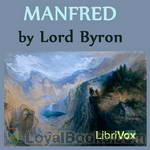 Manfred
Manfred
Manfred is a dramatic poem in three acts by Lord Byron, and possibly a self confessional work. A noble, Manfred, is haunted by the memory of some unspeakable crime. In seeking for forgetfulness and oblivion, he wanders between his castle and the mountains. He has several encounters with the people who try to assist him, as well as spirits that rule nature and human destiny. The poem explores themes of morality, religion, guilt and the human condition. | |
By: Lorenzo Da Ponte (1749-1838) | |
|---|---|
 Don Juan
Don Juan
Don Juan (Spanish), Don Giovanni (Italian) is a legendary, fictional libertine. Although the various iterations of the Don Juan myth show some variation, the basic story remains the same. Don Juan is portrayed as a wealthy, seductive libertine who devotes his life to seducing women, taking great pride in his ability to seduce women of all ages and stations in life. Don Giovanni, an opera composed by Wolfgang Amadeus Mozart with libretto by Lorenzo da Ponte, is arguably the best-known version. First performed in Prague in 1787, it inspired works by E... | |
By: Louisa May Alcott (1832-1888) | |
|---|---|
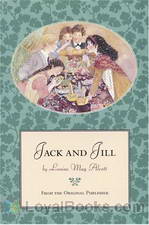 Jack and Jill
Jack and Jill
Louisa May Alcott, more famously known for her Little Women series, takes a familiar nursery rhyme and creates a whole novel out of it in one of her last books Jack and Jill: A Village Story. Though she continued to publish under the penname AM Barnard, this book probably marked the end of a particular writing phase in 1880. Jack and Jill is set in the fictional Harmony Village. On a December afternoon, the youngsters of the village are out enjoying the bracing cold and snow. The bright winter shines down as they have fun skating and sledding... | |
 An Old-Fashioned Girl
An Old-Fashioned Girl
Polly Milton, a 14-year-old country girl, visits her friend Fanny Shaw and her wealthy family in the city for the first time. Poor Polly is overwhelmed by the splendor at the Shaws’ and their urbanized, fashionable lifestyles, fancy clothes and some other habits she considers weird and, mostly, unlikable. However, Polly’s warmth, support and kindness eventually win her the hearts of all the family members. Six years later, Polly comes back to the city to become a music teacher. | |
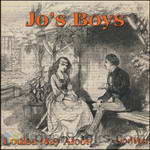 Jo's Boys
Jo's Boys
Jo’s Boys is the third book in the Little Women trilogy by Louisa May Alcott, published in 1886. In it, Jo’s “children”, now grown, are caught up in real world troubles. All three books – although fiction – are highly autobiographical and describe characters that were really in Alcott’s life. This book contains romance as the childhood playmates become flirtatious young men and women. The characters are growing up, going out into the world and deciding their futures. | |
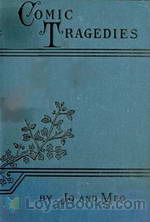 Comic Tragedies
Comic Tragedies
Fans of Louisa May Alcott's Little Women will remember the elaborate plays which the March sisters loved to perform. This volume, published after Alcott's death, is a compilation of the real plays written by her and her sisters, which were fictionalized in Little Women. | |
By: Lucian of Samosata | |
|---|---|
 Lucian's Dialogues Volume 1: The Dialogues of the Gods
Lucian's Dialogues Volume 1: The Dialogues of the Gods
The Dialogues of the Gods are 26 miniature dialogues mocking the Homeric conception of the Greek gods written in Attic Greek by Syrian author Lucian of Samosata. Almost 1900 years old, these dialogues still retain a lot of their original humor and wit. The cast list for dialogues with 3 or more readers is given below: Dialogue 8: Zeus: Owen CookHephæstus: KevinSStage directions: Foon Dialogue 9: Poseidon: ToddHWHermes: Owen CookStage directions: Foon Dialogue 13: Zeus: ToddHWAsklepius: FoonHerakles: KevinS Dialogue 20: Zeus: alanmapstoneHermes: Owen CookHera: FoonAthena: SoniaAphrodite: Sandra SchmitParis: Aaron WhiteStage directions: ToddHW Editor: Campbell Schelp | |
 Lucian's Dialogues Volume 2: The Dialogues of the Sea-Gods
Lucian's Dialogues Volume 2: The Dialogues of the Sea-Gods
The Dialogues of the Sea-Gods are 15 miniature dialogues mocking the Homeric conception of the Greek gods, originally written in Attic Greek by Syrian author Lucian of Samosata. Almost 1900 years old, these dialogues still retain a lot of their original humor and wit. - Summary by Foon Cast: Alpheius/Menelaus: ZoinkMeister Patrick Amphitrite/Panope: alanmapstone Cyclops: Nemo Delphines/Amymone: Leanne Yau Doris: Foon Enipeus: Rob Marland Galateia: Anita Sloma-Martinez Galene/Xanthus: Jeanne Viray Iphianassa: Pseudonymous Nerd Iris: Availle Notus: Stefan Von Blon Poseidon: Larry Wilson Protheus/Triton: Adam Bielka Thalassa: B L Newman Thetis: K... | |
 Lucian's Dialogues Volume 3: The Dialogues of the Dead
Lucian's Dialogues Volume 3: The Dialogues of the Dead
Dialogues of the Dead are 30 miniature dialogues mocking the Homeric conception of the Greek gods, originally written in Attic Greek by Syrian author Lucian of Samosata. Almost 1900 years old, these dialogues still retain a lot of their original humor and wit. - Summary by Foon The cast list for dialogues with 3 or more readers is given below: Dialogue 2: Kroesus: Lynette Caulkins Pluto: Alan Mapstone Midas: David Purdy Sardanapalus: TriciaG Menippus: Adrian Stephens Dialogue 3: Menippus:... | |
By: Lucy Maud Montgomery (1874-1942) | |
|---|---|
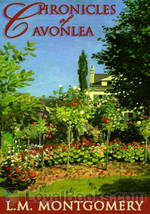 Chronicles of Avonlea
Chronicles of Avonlea
A collection of short stories first published in 1912, the book focuses on events occurring in the popular fictional village of Avonlea, which is notorious as the hometown of Anne Shirley. Comprised of 12 short stories, the Chronicles of Avonlea present a different view of the town, with the introduction of many new gripping characters, which prove to be just as endearing as their most renowned resident. Tales of everyday snippets of life proving to be humorous, identifiable, and heartwarming, the collection is an effective reinvigoration to the classic setting... | |
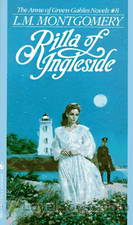 Rilla of Ingleside
Rilla of Ingleside
Rilla of Ingleside is the eighth book in the Anne of Green Gables series and focuses on the inspiring journey of Rilla Blythe, the youngest daughter of Anne and Gilbert, as she transforms from a carefree young girl into an enduring young woman swept into the chaos of war. Written from a female perspective, Montgomery accurately depicts a time in history, as she provides a contemporaneous account of the war and serves up the most emotional book in the series. Set during the First World War, the novel explores themes of coming of age, love, separation, and most importantly women’s roles during the war... | |
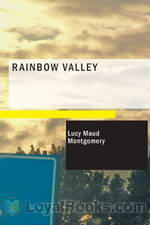 Rainbow Valley
Rainbow Valley
If you've read and loved Anne of Green Gables, you'd definitely like to add Rainbow Valley by Lucy Maud Montgomery to your collection. Published in 1919, it is the seventh book in the series and follows the further life and adventures of Anne Shirley. At Ingleside, Anne is now happily married to her childhood friend the devoted Gilbert Blythe and have now been together blissfully for fifteen years. They have six children. The book opens with the return of Anne and Gilbert (who is now a brilliant doctor) from a sojourn in London, where they had gone to attend a big medical congress... | |
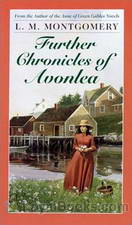 Further Chronicles of Avonlea
Further Chronicles of Avonlea
Further Chronicles of Avonlea is a collection of short stories by L.M. Montgomery and is a sequel to Chronicles of Avonlea. Published in 1920, it includes a number of stories relating to the inhabitants of the fictional Canadian village of Avonlea and its region, located on Prince Edward Island. The book was published without the permission of L.M. Montgomery, and was formed from stories she had decided not to publish in the earlier Chronicles of Avonlea. Montgomery sued her publishers, L.C. Page & Co, and won $18,000 in damages after a legal battle lasting nearly nine years. | |
 Kilmeny of the Orchard (version 2 Dramatic Reading)
Kilmeny of the Orchard (version 2 Dramatic Reading)
A short and sweet romance by the author of "Anne of Green Gables", Kilmeny of the Orchard is a story about a schoolteacher (Eric) who goes to Prince Edward Island and meets a beautiful but mysterious girl. Who is she? Why doesn't she speak? Why don't her guardians ever let her out? As Eric explores the answers to these questions, he slowly but surely falls in love with the mysterious girl. Will she ever speak to him? | |
 Story Girl (Version 2 Dramatic Reading)
Story Girl (Version 2 Dramatic Reading)
Carlisle on St. Edwards Island may appear to the outside world to be a quiet, rural farming town, but to a group of 8 teens and tweens, its forests, fields, and orchards are places of enchantment, wonder, and adventure! The Story Girl’s captivating tales toss Bev, Felix, Cecily, Felicity, Dan, Peter, Sara, and the Story Girl into mystical, magical, and spiritual worlds filled with princesses, sailors, mythological beings, and cosmological loves. The children find themselves running through ancient forests, shooting with the stars, sailing with treasure hunters, crossing rainbows with gods, spooking alongside the family ghosts, and discovering loves lost, loves found, and loves eternal... | |
By: Luigi Pirandello (1867-1936) | |
|---|---|
 Henry IV, A Tragedy in Three Acts
Henry IV, A Tragedy in Three Acts
A talented actor and historian falls off his horse in a historical pageant while playing the role of Henry IV. When he comes to, he believes himself to be Henry. For the next twenty years his nephew, Count de Nolli, funds an elaborate hoax in a remote villa, where actors play the roles of Henry's privy councillors and simulate the 11th century court.On request from his dying mother, de Nolli brings a Doctor referred to as the latest in a succession to try to cure Henry (whose real name, if it is not Henry, is never mentioned). All the action of the play occurs in this one day of the visit. | |
By: Marcus Minucius Felix | |
|---|---|
 Octavius
Octavius
This ancient Roman dialogue plays out as a religious debate between the Christian lawyer Octavius, and his close friend, a skeptical pagan named Caecilius. Caecilius is relatively agnostic, expressing skepticism towards both aspects of traditional Roman paganism, as well as towards his friend's newfangled Christian religion. Octavius attempts to give the reasons he has for his own beliefs and answer Caecilius' critiques. The author- Marcus Minucius Felix - plays the role of referee and observer. This is one of the earliest Latin texts to talk about Christianity, and describe how the new religion fit in the wider social context of the Roman world... | |
By: Mark Twain (1835-1910) | |
|---|---|
 The Adventures of Tom Sawyer
The Adventures of Tom Sawyer
If ever there was a story written based unabashedly on adventure and trouble, this is it. There are treasure hunts and murderers on the run in this book that will keep you spellbound. Tom and his half-brother, Sid, lived with their aunt, Polly. Tom was a boisterous young fellow who constantly found himself in rather awkward situations that landed him into trouble. These situations were however exceedingly hilarious. On one occasion, Tom dirtied his clothes in a fight and his punishment was to whitewash the fence the following day... | |
 Adventures of Huckleberry Finn (Dramatic Reading)
Adventures of Huckleberry Finn (Dramatic Reading)
In order to escape his cruel father, and led by a thirst for adventure, Huck Finn sets off down the Mississippi River with Jim, an escaped slave. But trouble is never far behind them, and their adventures are only beginning when they meet up with two men who claim to be a duke and a king! And that’s before Jim gets captured by none other than Tom Sawyer’s aunt and uncle… who mistake Huck for Tom. The hilarious adventures and scrapes of Huck, Jim, Tom, and others are brought to life in this dramatic reading... | |
By: Mary Roberts Rinehart (1876-1958) | |
|---|---|
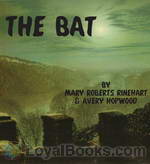 The Bat
The Bat
The novelization of the play of the same name that had an initial run of 867 shows on Broadway and has been performed all over the world and been made into three movies over a span from 1926 to 1959. An intricate mystery, with a wide cast of characters. (Summary by Alan Winterrowd) | |
By: Minot Judson Savage (1841-1918) | |
|---|---|
 Unitarian Catechism
Unitarian Catechism
This is a brief catechism of common Unitarian beliefs. As with most catechisms, the material is presented in a question and answer form. - Summary by KevinS | |
By: Molière | |
|---|---|
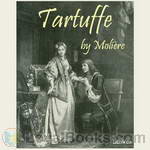 Tartuffe
Tartuffe
Jean-Baptiste Poquelin, known by his stage name Molière, was a French playwright and actor who is considered to be one of the greatest masters of comedy in Western literature. Among Molière's best-known works is Tartuffe or The Hypocrite, written in 1664. Though Tartuffe was received well by the public and even by Louis XIV, its popularity was lessened when the Archbishop of Paris issued an edict threatening excommunication for anyone who watched, performed in, or read the play.Tartuffe, a pious fraud who pretends to speak with divine authority, has insinuated himself into the household of Orgon... | |
By: Moliere (1622-1673) | |
|---|---|
 The Imaginary Invalid
The Imaginary Invalid
The Imaginary Invalid is a three-act comédie-ballet by the French playwright Molière. It was first performed in 1673 and was the last work he wrote. The plot centers around Argan, the 'imaginary invalid' who is completely dependent on his doctors and wants to marry his daughter to a doctor against her will, so that he will always have medical care freely available to him. In an ironic twist of fate, Molière collapsed during his fourth performance as Argan on 17 February and died soon after. | |
By: Myrtle Reed (1874-1911) | |
|---|---|
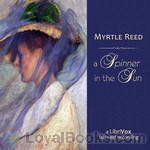 A Spinner in the Sun (dramatic reading)
A Spinner in the Sun (dramatic reading)
Myrtle Reed may always be depended upon to write a story in which poetry, charm, tenderness and humor are combined into a clever and entertaining book. Her characters are delightful and she always displays a quaint humor of expression and a quiet feeling of pathos which give a touch of active realism to all her writings. In "A Spinner in the Sun" she tells an old-fashioned love story, of a veiled lady who lives in solitude and whose features her neighbors have never seen. There is a mystery at the heart of the book that throws over it the glamour of romance. | |
By: Nahum Tate (1652-1715) | |
|---|---|
 The History of King Lear
The History of King Lear
The History of King Lear is an adaptation by Nahum Tate of William Shakespeare's King Lear. It first appeared in 1681, some seventy-five years after Shakespeare's version, and is believed to have replaced Shakespeare's version on the English stage in whole or in part until 1838. Unlike Shakespeare's tragedy, Tate's play has a happy ending, with Lear regaining his throne, Cordelia marrying Edgar, and Edgar joyfully declaring that "truth and virtue shall at last succeed." Regarded as a tragicomedy, the play has five acts, as does Shakespeare's, although the number of scenes is different, and the text is about eight hundred lines shorter than Shakespeare's... | |
By: Nicholas Rowe (1674-1718) | |
|---|---|
 Jane Shore: A Tragedy
Jane Shore: A Tragedy
Covering some of the plot of Shakespeare's Richard III, Jane Shore focuses on the mistress of the late Edward IV, also known as "The White Queen". In this short tragedy, Jane tries to thwart Richard's rise to power while experiencing love, betrayal, forgiveness, and an unexpected visitor who arrives in disguise. Cast ListLord Hastings: Tchaikovsky Duke of Gloster: ToddHW Belmour: Adrian Stephens Sir Richard Ratcliffe: Wayne Cooke Sir William Catesby: Alan Mapstone Dumont: Tomas Peter Jane Shore: Michele Eaton Alicia: WendyKatzHiller Jane's Servant: Larry Wilson Alicia's Servant: B. Jones Stage Directions: Adrienne Prevost | |
By: Noël Coward (1899-1973) | |
|---|---|
 Vortex
Vortex
Noel Coward explores the darker side of the roaring twenties in this early play. It focuses on an ageing beauty who uses affairs with younger men to keep her feeling relevant, and her son who is back from Paris after a year performing as a pianist and acquiring a cocaine habit. Set in the effervescent world of the socialite set, with plenty of the wit and charm that Coward is known for, The Vortex is, nonetheless, a powerful depiction of people who struggle to be completely honest with themselves... | |
By: Oscar Wilde (1854-1900) | |
|---|---|
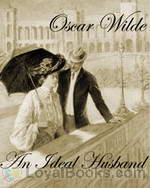 An Ideal Husband
An Ideal Husband
This story opens at a fashionable dinner party in Sir Robert Chiltern's home in the heart of London's stylish Grosvenor Square. One of Lady Chiltern's old school-friends, Mrs. Cheveley, a woman with a dubious past, accosts Sir Robert and threatens to expose a financial crime that he had once participated in, unless he agrees to finance a fraudulent construction project that she's promoting. Lady Chiltern is astounded when her husband who had been the severest critic of this project suddenly begins to speak in its favor... | |
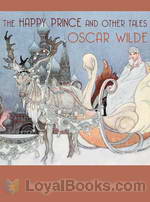 The Happy Prince and Other Tales
The Happy Prince and Other Tales
The Happy Prince and Other Tales (also sometimes called The Happy Prince and Other Stories) is an 1888 collection of stories for children by Oscar Wilde. It is most famous for The Happy Prince, the short tale of a metal statue who befriends a migratory bird. Together, they bring happiness to others, in life as well as in death. The stories included in this collection are:The Happy PrinceThe Nightingale and the RoseThe Selfish GiantThe Devoted FriendThe Remarkable RocketThe stories convey an appreciation for the exotic, the sensual and for masculine beauty. | |